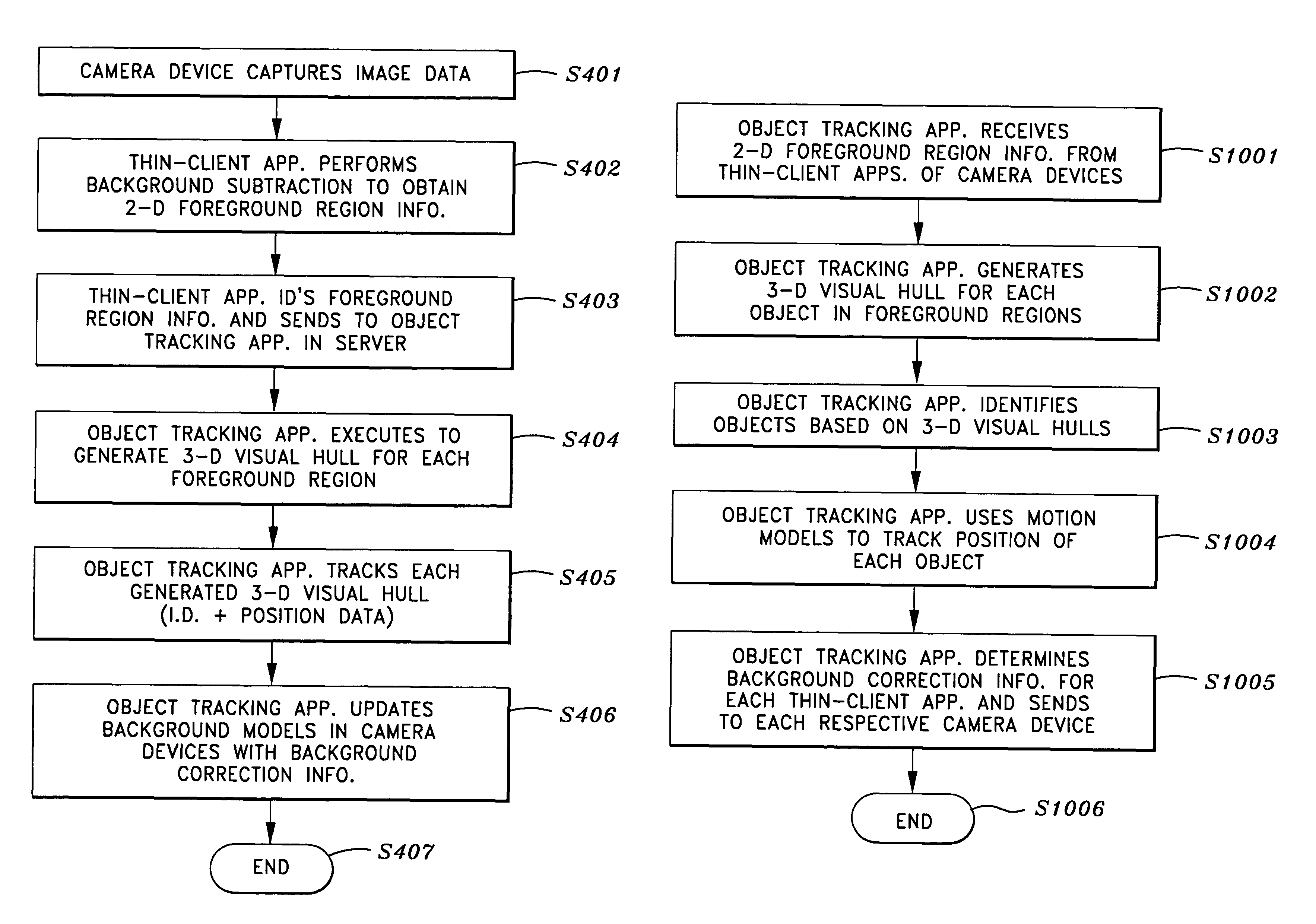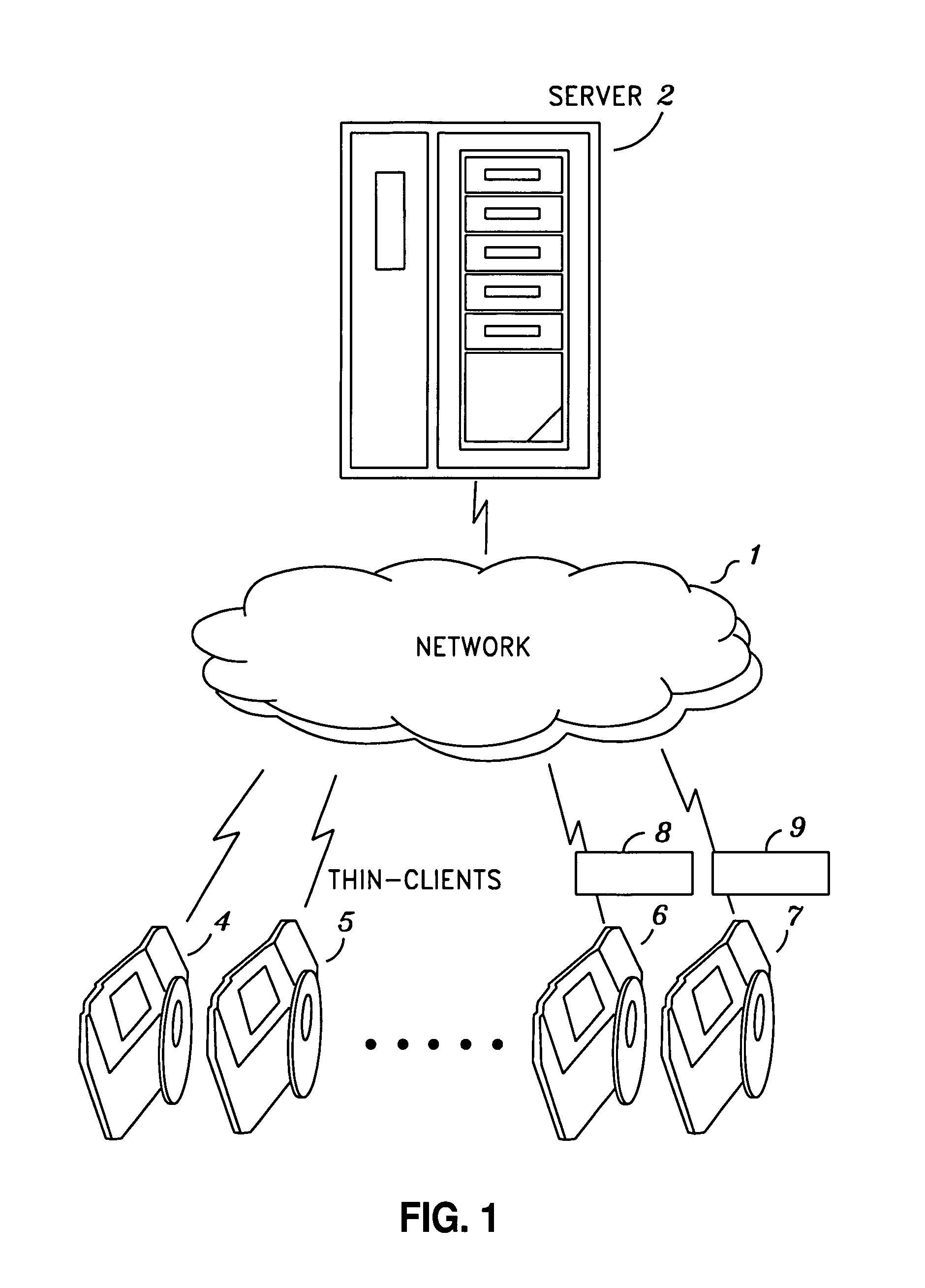Three-dimensional object tracking using distributed thin-client cameras
a thin-client camera and three-dimensional object technology, applied in the field of three-dimensional object identification and tracking systems, can solve the problems of unreliable object position estimation, aforementioned techniques fail to construct three-dimensional volumes of objects being tracked to provide a more reliable estimation, and aforementioned techniques often have difficulty in tracking multiple objects, so as to achieve efficient and reliable tracking of objects, easy to scale
- Summary
- Abstract
- Description
- Claims
- Application Information
AI Technical Summary
Benefits of technology
Problems solved by technology
Method used
Image
Examples
Embodiment Construction
[0025]As mentioned above, the present invention is generally directed to a distributed system which includes multiple thin-client connected cameras that process image data at the thin-client and then send detected foreground image information to a server which then creates a three-dimensional visual hull representing each object based on the collective foreground image information obtained from the plurality of thin-clients.
[0026]Turning the drawings, FIG. 1 presents a network environment in which the present invention may be practiced. As seen in FIG. 1, the object tracking system of the present invention includes server 2, network 1 and camera devices 4 to 7. Network 1 may be a wired or a wireless LAN or may be the internet. Various types of transport protocol can be used for communication between server 2 and camera devices 4 to 7 via network 1, such as TCP, HTTP, or a custom protocol. If desired, the communication can be performed in a secure manner by also using secure protocol...
PUM
 Login to View More
Login to View More Abstract
Description
Claims
Application Information
 Login to View More
Login to View More - R&D
- Intellectual Property
- Life Sciences
- Materials
- Tech Scout
- Unparalleled Data Quality
- Higher Quality Content
- 60% Fewer Hallucinations
Browse by: Latest US Patents, China's latest patents, Technical Efficacy Thesaurus, Application Domain, Technology Topic, Popular Technical Reports.
© 2025 PatSnap. All rights reserved.Legal|Privacy policy|Modern Slavery Act Transparency Statement|Sitemap|About US| Contact US: help@patsnap.com



